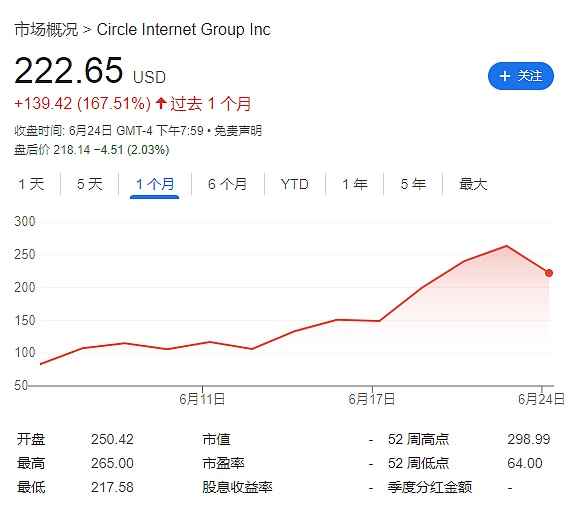Stablecoin, the product form closest to RWA in crypto finance, is facing unprecedented regulatory changes.
In the early morning of June 18, 2025, the U.S. Senate passed the GENIUS Act (Giving Every Nation a United Stablecoin), which is hailed as a milestone in crypto payment legislation, with 68 votes in favor and 30 votes against. This is the first time that the United States has established a clear compliance path for stablecoins at the federal level, marking a key turning point for crypto assets from technical experiments to institutionalization.
At the same time, Hong Kong, China has also made forward-looking arrangements through the Stablecoin Ordinance and future related license applications, and will officially accept stablecoin issuance license applications on August 1, becoming the world's first financial center to implement a local stablecoin licensing mechanism.
As stated in "A Panorama of Traditional Institutions Entering the Market: Positions, Stablecoins, and Legislation Go Hand in Hand, Are Giants Reshaping Web3?", the new compliance cycle represented by the United States and Hong Kong may profoundly reshape the status of stablecoins in the global financial system. The undercurrents behind all these variables are accelerating to the forefront.
The United States: Firing the First Shot of Stablecoin Compliance
Which is the most successful crypto-financial product in the world in the past five years?
The answer is not difficult to guess. It is neither the on-chain financial innovations such as Uniswap that ignited the DeFi Summer, nor the digital artworks such as CryptoPunks that set off the NFT craze. Instead, it is the stablecoins that everyone has long been accustomed to.
Yes, in addition to games with big-user attributes such as DeFi and NFT, stablecoins for ordinary users have become one of the use cases widely accepted by crypto/non-crypto users, and have gradually become an important bridge in on-chain payments, cross-border settlements, financial transactions and even Web2 scenarios, greatly broadening and deepening the user base of the crypto economy.
But objectively speaking, its widespread application has always been in a gray area -
The lack of unified supervision, opaque reserve mechanism, and vague legal attributes have become key issues hindering institutional entry and mainstream adoption. As a weather vane of global financial rules, the passage of the US "GENIUS Act" is undoubtedly a milestone. For the first time, this bill comprehensively stipulates the definition, issuance qualifications, reserve mechanism and user rights of stablecoins at the federal level. The core points include: mandatory 1:1 reserve support, all issuers must maintain legal currency reserves equal to the issued stablecoins, and users can redeem their stablecoins at 1:1 at any time.
At the same time, the issuance qualifications are limited to banks, licensed non-bank financial institutions and audit-compliant enterprises, and the applicable objects are wide, including corporate clearing stablecoins, consumer payment stablecoins, etc. This means that
the stablecoin business, which has long been wandering in the gray area, will enter the institutional track of "having laws to rely on and regulations to abide by" for the first time,especially for companies like Circle, PayPal, JPMorgan, etc. that are promoting stablecoin business.

For this reason, as the only stablecoin issuer currently listed on the U.S. stock market, Circle has been rising since its IPO on June 5, soaring from an issue price of $31 to a maximum of $263.45, an increase of more than 100%, ranking among heavyweight players such as Coinbase and Robinhood.
More noteworthy is that
Circle's market value once approached $60 billion, equivalent to the total circulating market value of the USDC it issued, which undoubtedly also marks the beginning of a revaluation of the market's pricing of compliant stablecoin logic. This also shows that the imagination of "stablecoin compliance" is no longer limited to Web3, but has begun to be projected into the mainstream financial narrative. Regardless of the subsequent actual direction, it is a turning point for crypto assets to further enter the mainstream vision and obtain a legal and compliant framework.
Hong Kong: Take the lead in issuing licenses and accelerate implementation
Since the publication of the "Policy Declaration on the Development of Virtual Assets in Hong Kong" on October 31, 2022, Hong Kong has been at the forefront of the world's major jurisdictions in the field of crypto regulation.
As early as January 2022, the Hong Kong Monetary Authority issued a discussion paper on crypto assets and stablecoins and invited stakeholders to provide feedback. At the beginning of last year, it launched a "sandbox" for stablecoin issuers to understand the business models of institutions planning to issue fiat stablecoins in Hong Kong.
AndThe latest Hong Kong "Stablecoin Ordinance" will come into effect on August 1, when the Hong Kong Monetary Authority will begin accepting license applications.The Hong Kong Monetary Authority has already launched market consultation on the specific guidelines for the implementation of the "Stablecoin Ordinance".

Source: Hong Kong Monetary Authority
Based on the information currently disclosed, the key institutional design adheres to the principle of "same activities, same risks, same supervision", including that the issuer must apply to the HKMA for a stablecoin issuance license, must have a physical local registered company, and the assets must be fully linked to the total issuance amount, and the reserve assets should be highly liquid fiat currency or short-term government bonds.
It can be said that the above-mentioned regulatory dimensions and mechanisms are similar to those of the United States. It is worth noting that Hong Kong's regulatory system applies to stablecoins anchored by major currencies such as USD and HKD. The core of the policy is to provide a stable clearing and settlement medium for Web3 finance, while attracting more institutions to implement stablecoin businesses in Hong Kong.
It should be noted that as an international financial center, Hong Kong has been actively exploring the path of financial innovation, and the stablecoin market is to some extent the comfort zone of Hong Kong as an international financial giant - it covers a wide range of financial services formats, and has many years of accumulation and rich experience, a mature risk control system, a sound trading infrastructure and a large customer base.
This also makes it more flexible and in line with international standards than the United States, attracting more institutions to use Hong Kong as a springboard to explore the path of stablecoin clearing and issuance in the Asian market. At present, local heavyweight players such as HashKey and OSL are said to have applied for preparation or layout for stablecoin licensing, and have become an important entry point for observing the integration of Hong Kong's crypto compliance and financial infrastructure.
The European Union, South Korea and other places have blossomed
In addition, the EU's "MiCA Regulation" (Markets in Crypto-Assets) that came into effect in 2024 has fully covered the compliance supervision of crypto assets and has made detailed classifications of stablecoins, including EMT (electronic money tokens) and ART (asset reference tokens).
Among them, the former refers to stablecoins anchored to a single fiat currency, such as the EURC issued by Circle, and the latter refers to stablecoins anchored to a basket of assets, such as the failed Libra type. EMT stablecoins need to obtain the license of the European Union Electronic Money Institution, be regulated by the central bank, disclose the reserve composition and operating mechanism, and ensure the user's redemption rights. Circle's EURC is the first batch of products to benefit from the implementation of MiCA.
At the same time, South Korea, whose influence in the field of Crypto cannot be underestimated, has also proposed the "Basic Law on Digital Assets" by its new president Lee Jae-myung, who is in power. It clearly stipulates that as long as a Korean company has a share capital of at least 500 million won (about 370,000 US dollars) and ensures that the refund is guaranteed through the reserve fund, it can issue stablecoins. According to data from the Bank of Korea, South Korea’s stablecoin trading volume has surged, with trading volume of major US dollar stablecoins reaching 57 trillion won (about 42 billion U.S. dollars) on five major domestic exchanges (Upbit, Bithumb, Korbit, Coinone, and Gopax) in the first quarter.
Just recently, Ryu Sang-don, senior vice governor of the Bank of Korea, also said that the introduction of won-denominated stablecoins should be gradual.The most strictly regulated commercial banks should be allowed to issue won stablecoins first, and then gradually open them up to non-bank institutions after gaining experience.
In addition, several major financial centers have historically released local stablecoin frameworks or pilot projects:
The Monetary Authority of Singapore (MAS) proposed a draft stablecoin regulation in 2023, emphasizing 1:1 reserves, transparent disclosure and local operation requirements;
The Abu Dhabi Global Market (ADGM) in the United Arab Emirates launched a stablecoin clearing and settlement pilot, attracting cross-border businesses such as PayPal and USDC;
Japan passed a new bill allowing banks and trust companies to issue stablecoins;
Overall, European regulation focuses on safeguarding user rights and financial stability, while South Korea prefers to explore in cooperation with local financial and technology giants. This not only indicates that the global stablecoin regulatory system is gradually moving towards a unified standard, but also shows that stablecoins are no longer a gray area, but are being regarded as a formal part of financial innovation. Its regulatory testing ground has also become an important capital policy tool to attract Web3 projects.
Dialectically speaking, starting from 2025, whether it is crypto asset ETFs or stablecoins, the new regulatory cycle has become a clear watershed in the development of Web3 and the crypto industry, especially when compliance becomes the main line of the next stage of stablecoin development. The exploration of various countries at the institutional level not only affects the market structure, but also profoundly shapes the future infrastructure of Web3 finance.
It can be said that, looking at the world,stablecoins are undergoing a dramatic change from "grassroots expansion" to "system-led",and the reconstruction of the pattern under this great change is also being carried out in an all-round way as laws and regulations of various countries are implemented one after another.
 Joy
Joy






